M1 - Model One
steel strings and classical body size - like: Martin OO deep body
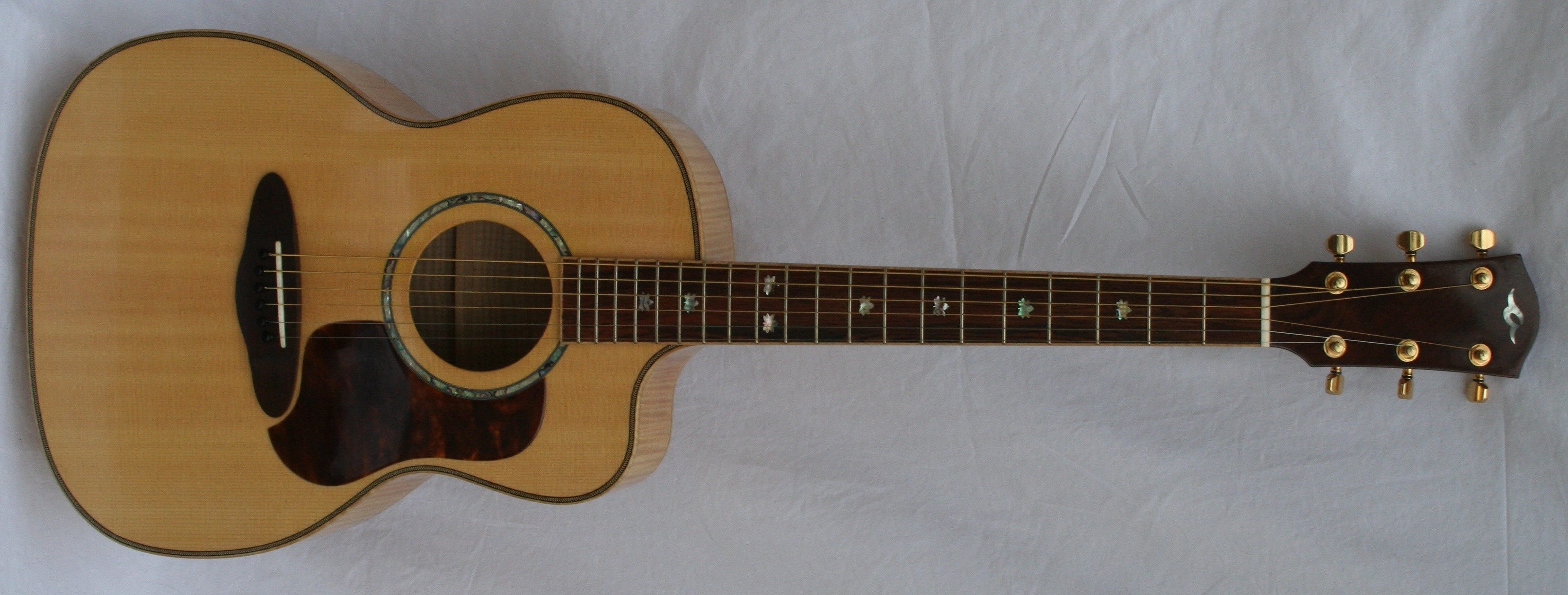
- Dimensions:
- Total length M1 40.25in / 102.24cm
- Paniolo and Classic 38.75in / 98.43cm
- Body length 19.0in / 48.26cm
- Body width 14.25in / 36.2 cm
- Tail block 4.0in / 10.2cm
- Total depth 4.88in / 12.4cm
Throughout the ages, the guitar has been preceded by a plethora of stringed instruments. Though many are still in use today, the guitar has exceeded all of them in popularity and utility. In the mid 19th century, the guitar became standardized in its size and basic design.
A guitar, built in 1859 by Manuel de Torres was the inspiration that helped establish patterns for the M1. Steel strings, a 14th fret neck joint and my own bracing and construction geometry combine to form a blueprint for the modern classical guitar.
The M1 is well recognized as a recording star in the hands of Dean Parks. It is truly an all around instrument, working well for writing and performing (Mark Bryan of Hootie and the Blowfish, Gary Hoey) or just playing around (PGA tour pro John Rollins).
Also available in this body type are the Paniolo, a 12th fret nylon string from the same molds and the Classic made in the Spanish style.
A1 - Auditorium
steel strings - like: Martin OOO/OM, Taylor 14 series
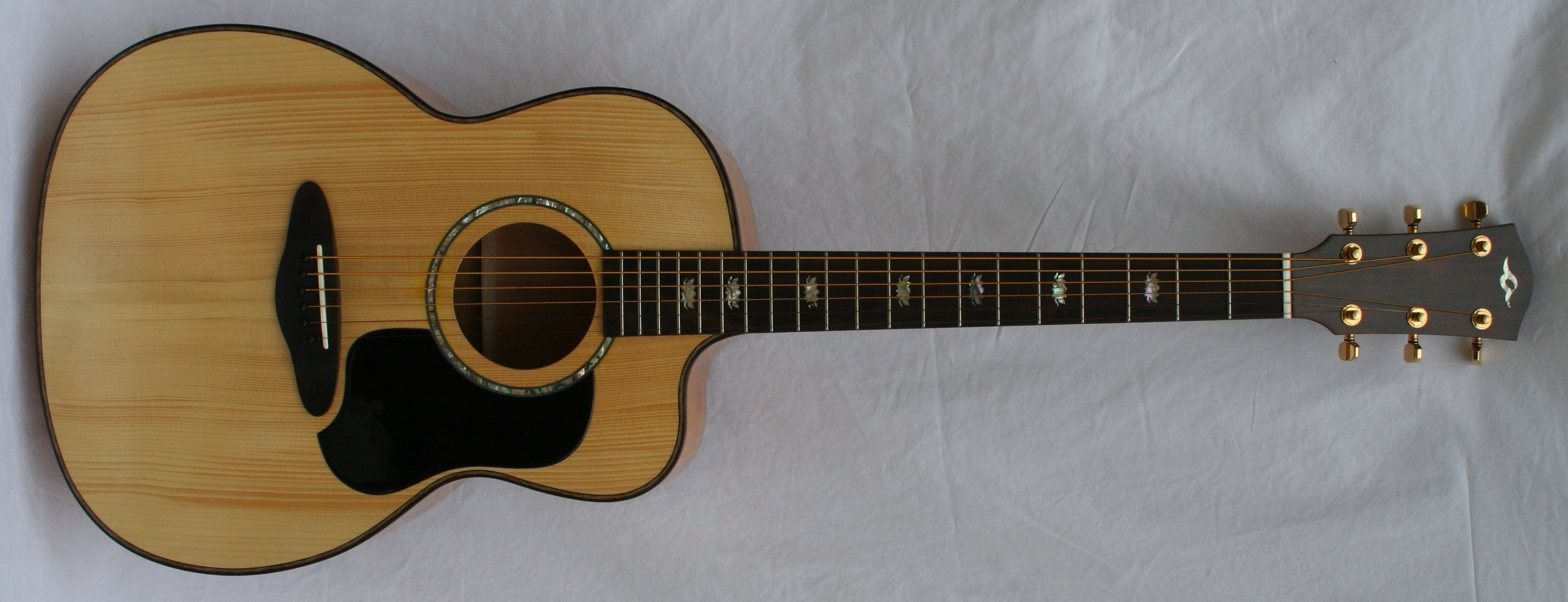
- Dimensions:
- Total length 41.25in / 104.78cm
- Scale length 25.5in / 64.77cm
- Body length 19.88in / 50.5cm
- Body width 15.125in / 38.42cm
- Tail block 4.25in / 10.8cm
- Total depth 5.31in / 13.5cm
The A1 reflects the state of the art in steel string acoustic guitars. Innovations on the early classical and parlor guitars such as steel strings, the 14 fret neck joint, and larger more graceful body shapes were seen early in the 20th century.
Modern advancements in adhesives, materials and tools, combined with scientific study and the shared skills of many great builders have brought this type of guitar proudly into the 21st century.
The A1 is the most popular model owned by artists such as Mark Mancina, Pat Simmons, Tommy Johnston, Jeff Pevar, and the gang at Mutato Muzika[Devo].
SD1 - Super D
super dreadnought steel strings, body size like: Martin 12 fret dread
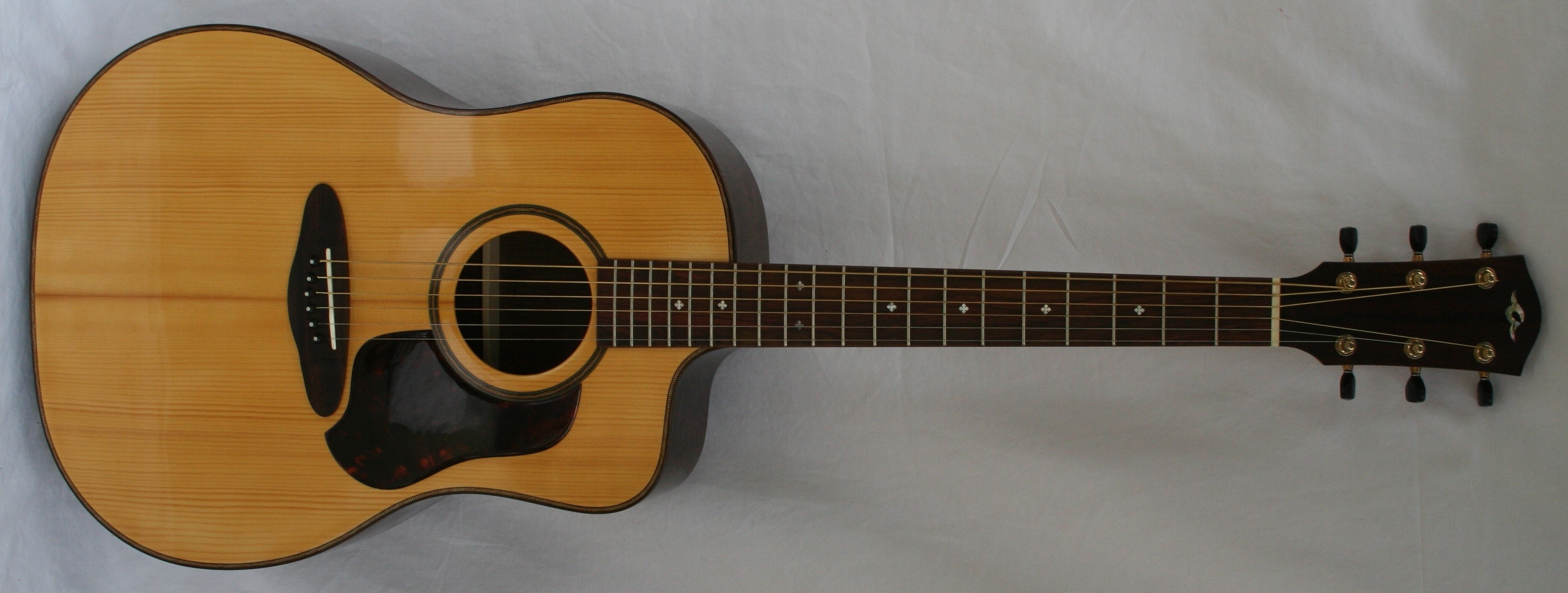
- Dimensions:
- Total length 43.25in/109.86cm
- Scale length 25.5in/64.77cm
- Body length 21.0in/53.34cm
- Body width 15.75in/40.0cm
- Tail block 4.25in/10.8cm
- Total depth 5.31in/13.5cm
The original dreadnoughts had a 12th fret neck joint. When they switched to 14th fret joints, the body length was shortened to match. I chose to retain the original length for the Super Dreadnought.
Coordinated bracing and gentle yet uninterrupted curves in the outline continue the concept of strength through ingenuity as opposed to overweight construction. It sounds just like a dreadnought is expected to sound. Big and powerful highs with that back bass kind of thing going on like someone is playing along with you.
Its trademark and the original reason for its predecessor's existence - keeping up with fiddle and banjo - is volume.
The Super D's clarity and finesse is appreciated by ace axemen, Jeff Pevar and Chris Rodriguez. 12 string player Tolouse Englehart uses his to stretch the limits of what a guitar can do. Jim Messina, Johnny Lee and John Daly are also included on the players list.
J1 - Jumbo
steel strings modern take on Gibson jumbo
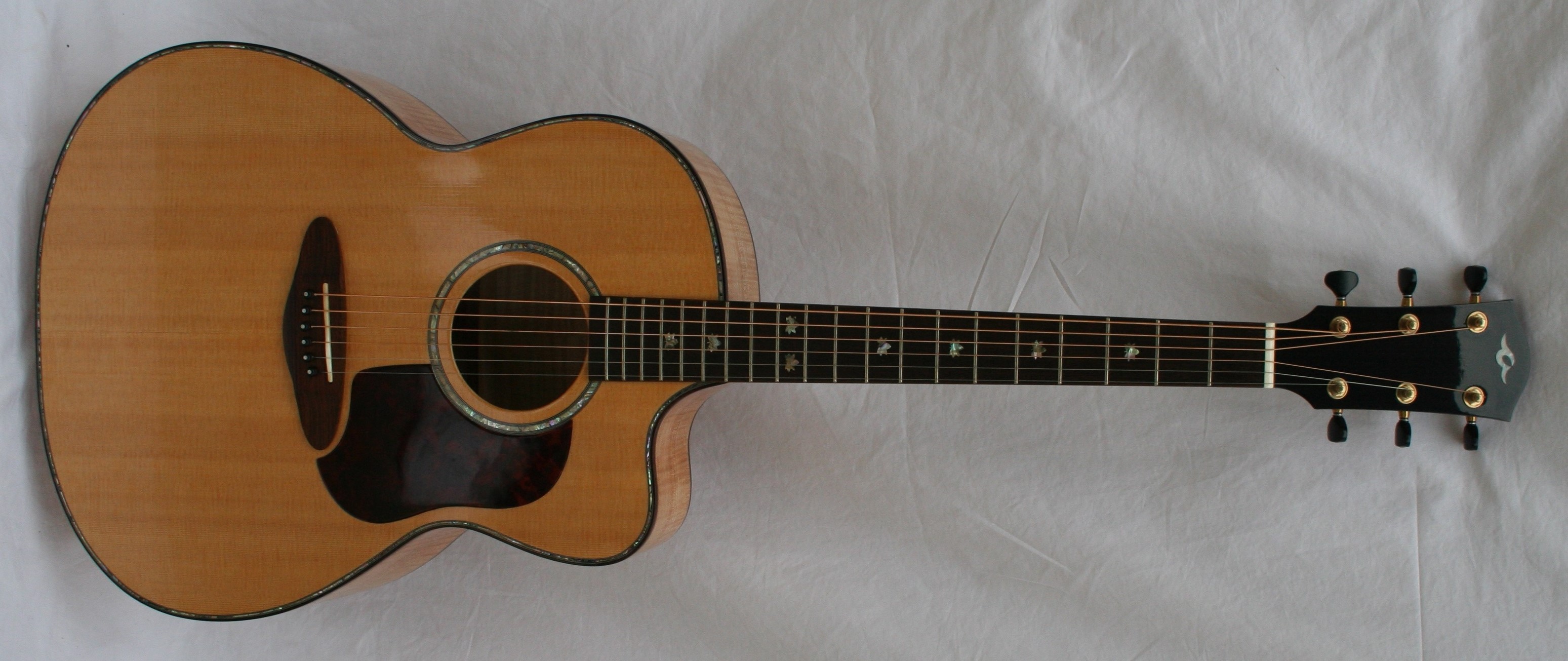
- Dimensions:
- Total length 43.5in. / 110.49cm
- Scale length 25.5in. / 64.77cm
- Body length 21.25in. / 53.98cm
- Body width 17in. / 43.18cm
- Tail block 4.25in. / 10.8cm
- Total depth 5.41in. / 13.74cm
Back in the 1930's when the big bands were becoming hot and before electronic sound reinforcement was common, you got the biggest guitar possible and the biggest strings possible; usually with the highest action possible and pounded like a mad man in order to be heard over the horns and expanding drum kits. This seemed like a great idea to a guy named Ray Whitley, a cowboy star of the time. He pitched it to his favorite guitar company in the form of the perfect Country music guitar. I added my own construction and geometry to the old standard and the result is the jumbo model J1.
Design improvements allow the J1 to crossover into many musical styles. You'll find them gracing the stage with Hawaiian slack key master George Kahumoku jr. and John York (former Byrd and Redneck Ninja).
T1 - Troubador
steel strings and 14 fret parlor size - like: Martin O
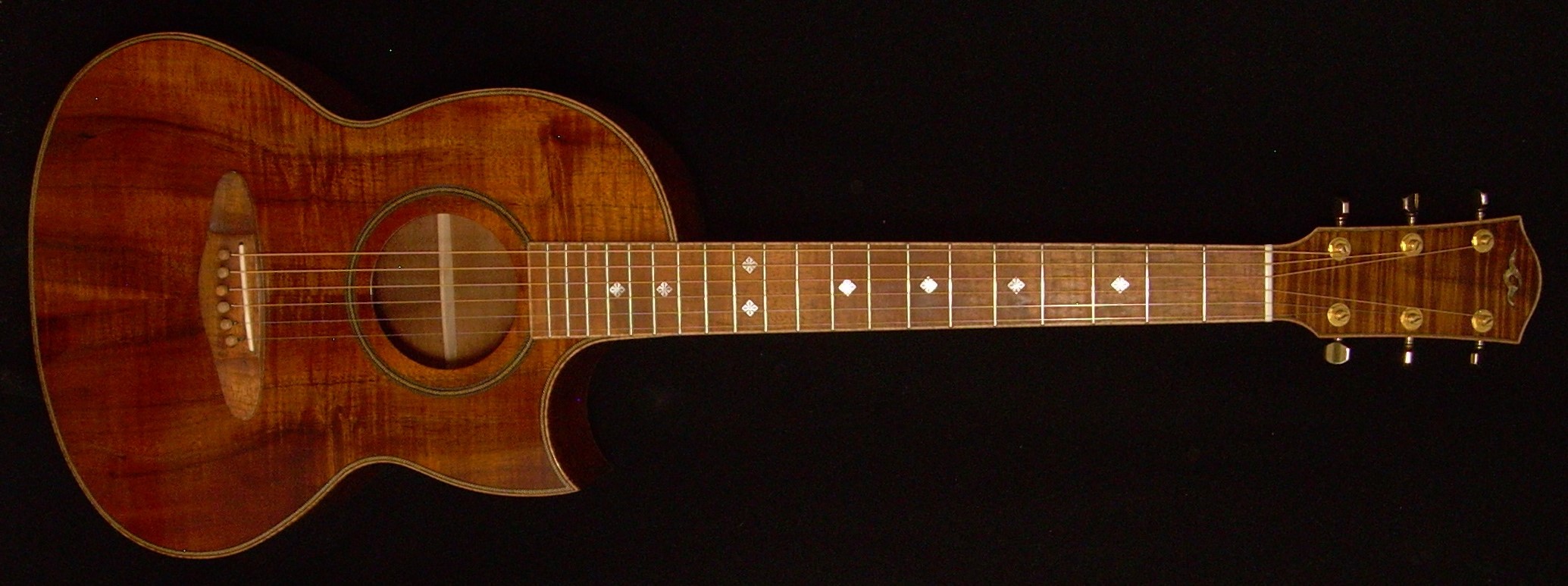
- Dimensions:
- Total length 38.75in / 98.43cm
- Scale length 25.5in. / 64.77cm
- Body length 18.0in / 45.72
- Body width 13.5in/ 34.29
- Tail block 4.0in / 10.2cm
- Total depth 4.625in / 11.75cm
Near the end of 2010 when the economy was tanked and A.Davis guitars was sinking slowly into the mire, I was assembling spec bodies; building ukuleles; using every scrap of wood just to keep busy. I built some of my best guitars during this period. The troubador was created because I had some pieces of koa, mahogany and distressed Adirondack spruce that were bigger than a uke and smaller than a guitar. The result is a sweet sounding instrument; bright warmth and clarity with surprising bass response. It is a great performer you can take anywhere
SD1 - Baritone
steel strings and 27" scale on SD or J body

- Dimensions:
- Total length 44.75in / 113.67cm
- Scale length 27in / 68.58cm
- Body length 21.0in/53.34cm
- Body width 15.75in/40.0cm
- Tail block 4.25in/10.8cm
- Total depth 5.31in/13.5cm
From time to time artists and dealers would mention this instrument: "Why don't you make a Baritone?" The solution was fairly simple. I adjusted the bracing on the SD1 and made a neck with one more fret at the nut. All of the baritones I have built are being used to make records or film scores. I guess I should make a few more. Baritone players include: Mark Mancina, Dean Parks, James Valentine (Maroon 5) and Cady Truckee (Truckee Brothers).
M1 - Paniolo
nylon string hybrid classical like: 1859 DeTorres
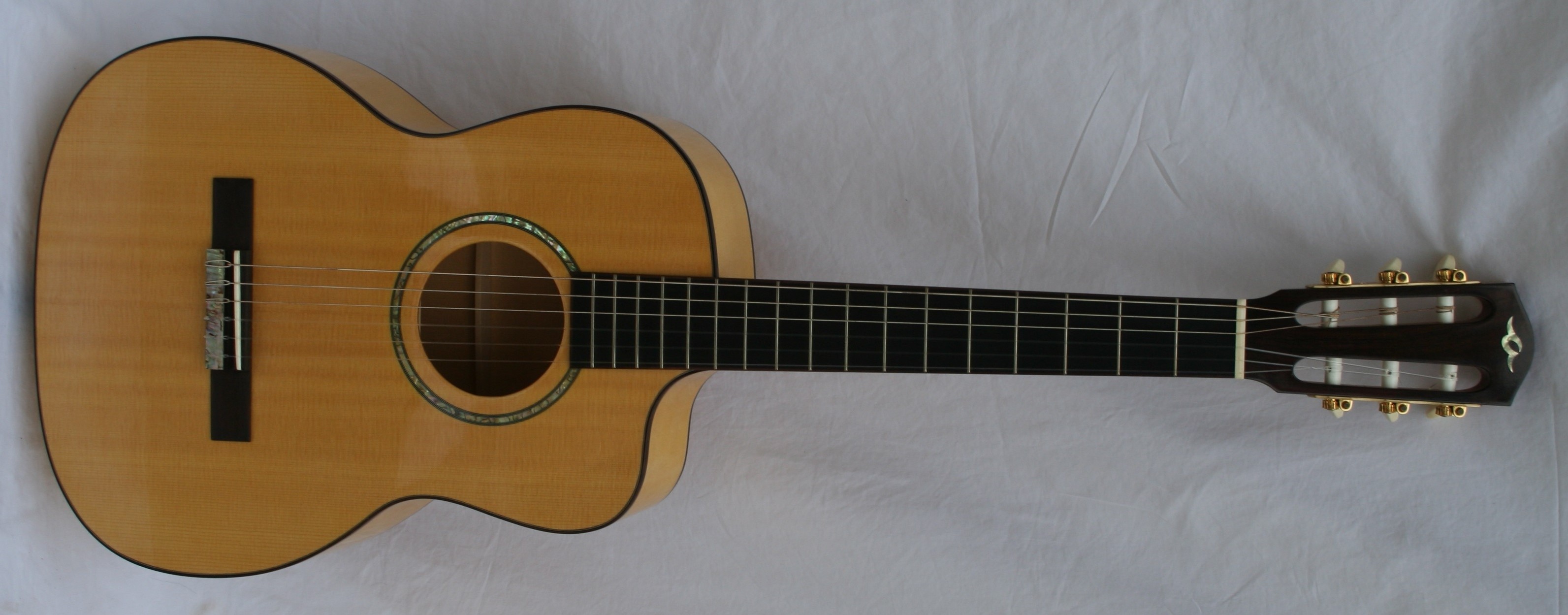
- Dimensions:
- Total length 38.75in / 98.43cm
- Scale length 25.5in. / 64.77cm
- Body length 19.0in / 48.26cm
- Body width 14.25in / 36.2 cm
- Tail block 4.0in / 10.2cm
- Total depth 4.88in / 12.4cm
A hybrid Spanish style guitar that is equally at home on the range or in the orchestra. A 1 7/8" width at the nut and more standard classical spacing at the bridge make it easy to handle for classical and steel string players. A bit sturdier than the Classic, it is road worthy and the b-fan top bracing gives it concert level performance.
Witness Dean Parks backing up Lizz Wright with violinist Pasha Tseitlin on an M1MCS.
Paniolo is the Hawai'ian word for cowboy. I use it in homage to the way the Hawai'ians have quietly infiltrated popular music with their slack-key, finger-picking, thumb bass, lap slide and soprano singing. Aloha!
M1 - Classic
nylon string modern take on Spanish method
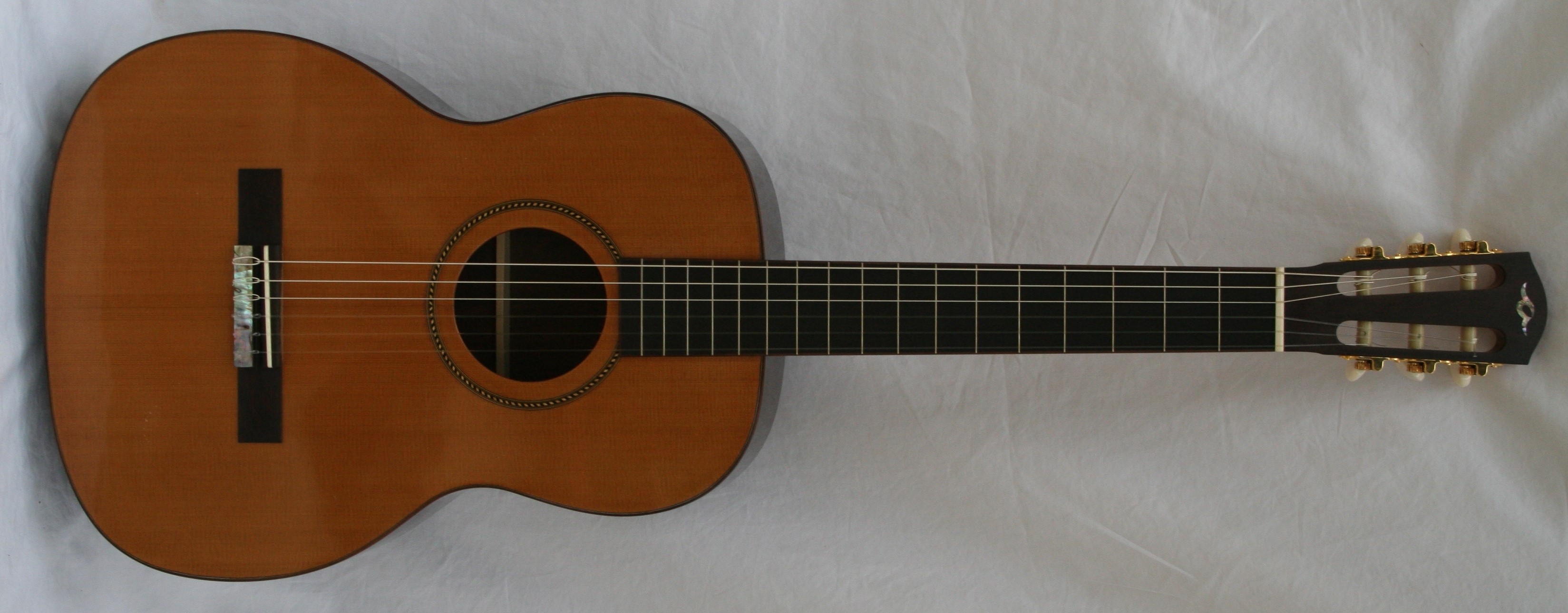
- Dimensions:
- Total length 38.75in / 98.43cm
- Scale length 25.5in. / 64.77cm
- Body length 19.0in / 48.26cm
- Body width 14.25in / 36.2 cm
- Tail block 4.0in / 10.2cm
- Total depth 4.88in / 12.4cm
These instruments have been refined and studied for 150 years. There are measurements and recordings available for many of the notable guitars by the greatest builders. The criteria for a classical guitar is informal yet precise. The lightness in construction required for power and sensitivity and the strength and musicality of the individual pieces required for a balanced yet vibrant sound makes the bill of materials hard to fill. Ultimately, I'm just trying to follow a path that is well worn by my peers and those that came before me.
"If I have seen further, it is by standing on the shoulders of giants." Isaac Newton
SD and J - 12 String
steel strings modern take on Gibson jumbo
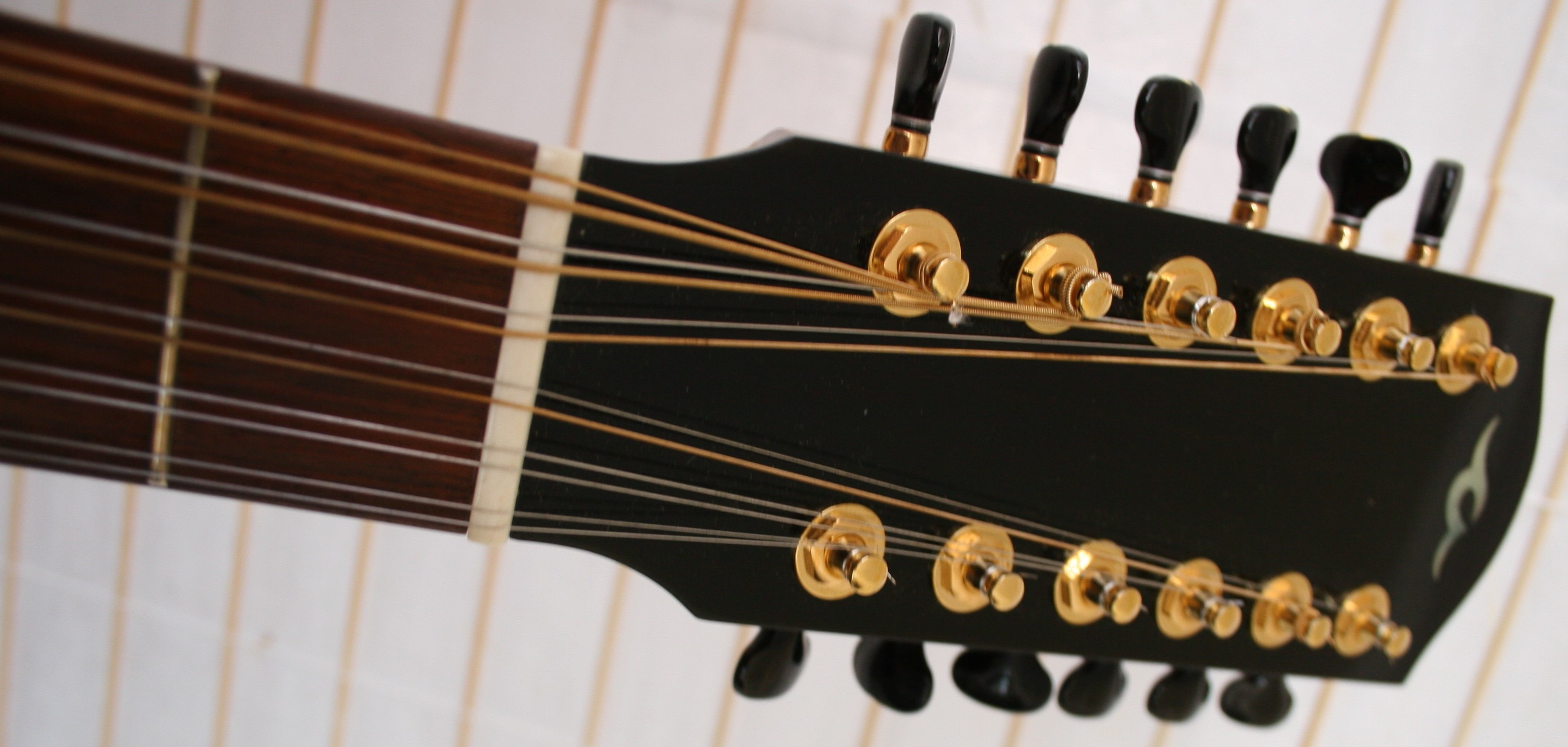
- Dimensions: SD12/J12
- Total length 44.25in / 44.5in
- Scale length 25.5in / 64.77cm
- Body length 21.0in / 21.25in
- Body width 15.75in / 17in
- Tail block 4.25in/ 4.25in
- Total depth 5.31in / 5.41in
The 12 strings are made on the same molds as their 6 string counterparts. The neck is wider and the bracing is adjusted for the higher tension. The slack key models I made for George Kahumoku Jr are a bit more tricky. The tension on the first course is very low; like putting .007's on your acoustic, and the bass strings are a half step above the Baritone. Balancing the tone is done by carefully choosing tonewoods and carving the bracing to get bright clear highs, warm stout mids and "plugged in bass."
After seven years of sitting on the fence, David Crosby picked one of these up and couldn't put it down. Croz said: "I keep telling [Martin guru] Dick Boak to make guitars like this."
JB - Bass Guitar
steel strings 30 inch scale for harmonics and playability
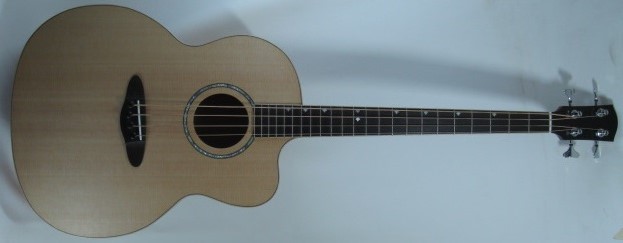
- Dimensions:
- Total length 48.0in. / 110.49cm
- Scale length 25.5in. / 64.77cm
- Body length 21.25in. / 53.98cm
- Body width 17in. / 43.18cm
- Tail block 4.25in. / 10.8cm
- Total depth 5.41in. / 13.74cm
I was incited to build one of these by a referral client. I chose a 30" scale after learning in my physics class that less tension means more harmonics. It also means super groovy playability for bass guitar players. I was surprised by the clear and concise tone. Unlike many acoustic basses, it is easy to play at a volume where you will be heard in a crowd. I will probably make more in the future.
H1 - Harp Guitar
modified J1 with harp strings
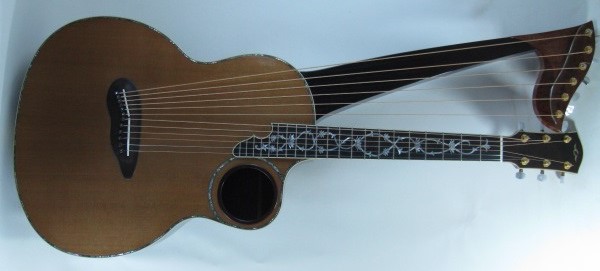
- Dimensions:
- Total length 48.0in. / 110.49cm
- Scale length 25.5in. / 64.77cm
- Body length 21.25in. / 53.98cm
- Body width 17in. / 43.18cm
- Tail block 4.25in. / 10.8cm
- Total depth 5.41in. / 13.74cm
This H1 harp guitar was a brainstorming project to build a truly remarkable instrument to fit A.Davis Guitars top-level marketing strategy; something with all of the options and all of the sound. The clarity and tone is awesome ( I never use that word )
The back and sides are high grade EI Rosewood my best man Toby purchased from a dealer in Japan and brought home in a backpack. The hollow harp column is crispy old Brazilian rosewood and the neck is Hondouras mahogany.
The soundhole stiffener is made of manzanita burl from firebreaks cleared for the huge fires that wiped out San Diego's back country in 2003. Putting the soundhole on the edge of the guitar allows more area to produce sound in the middle of the instrument. It gives great projection out the front but limits the players reception. A side hole acts like a monitor and also mitigates unwanted Heimholtz resonances.
The Kasha style bracing employs a free floating bridge/plate assembly that adds gobs of sustain. The bracing mirrors the frequencies produced by each of the strings. The treble notes are produced in a small, light area then sent throught the instrument for enhancement. The bass braces reach the guitars edges to create the longest waves possible for a given outline.
Engraved mother of pearl lotus blossoms in an Indian motif complement the ivoroid binding and rosewood. No elephants were used except possibly to move the log this fine instrument was made from.. It's for sale $12-14,700 and I'll offer a discount for gas or a plane ticket to San Diego to pick it up.
Custom
custom build to your requirements
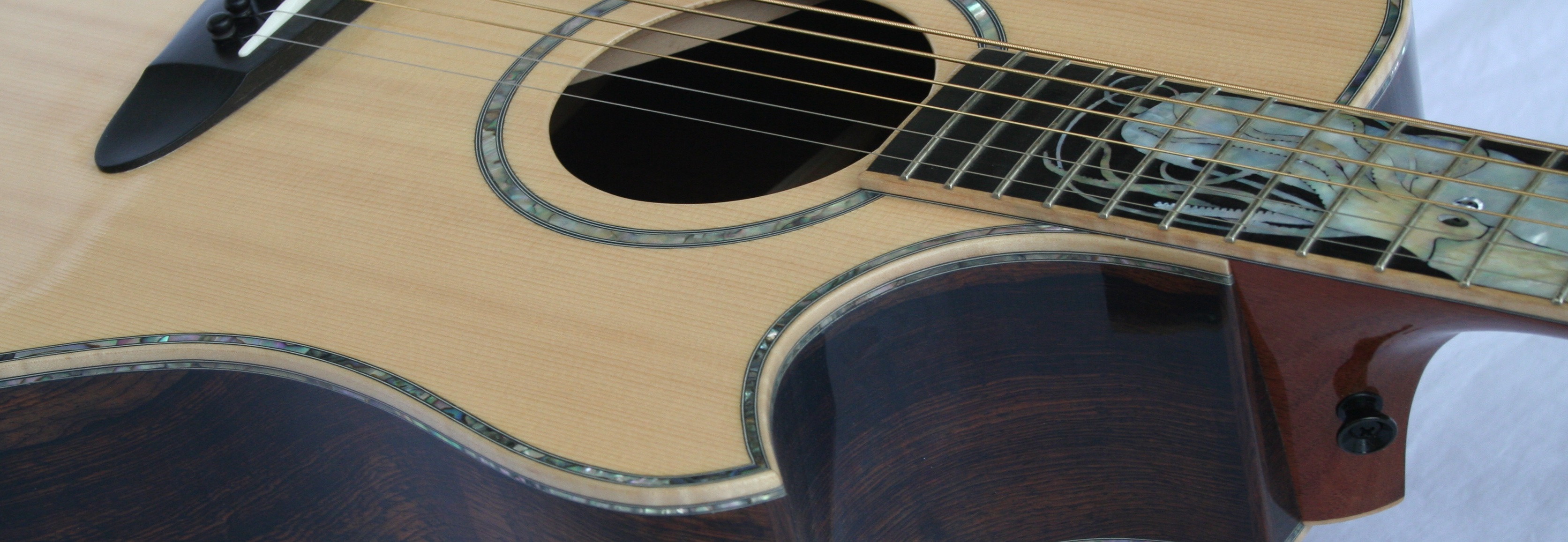
Rare Wood and Custom Sound - Inlays from Subtle to Overschmaltz
Custom page
I can build anything that you
can dream up. Please call
or email with your requirements.
email artdavis07@gmail.com
phone 760-271-6250